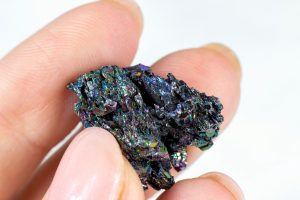Lego invests $2.4 million in direct-air capture carbon removal
Lego Group plans to double its annual spending on emissions reduction and sustainability measures between 2023 and 2025, investing a total of $1.4 billion over the period.
The Danish company this week committed a small portion of that money to a $2.4 million carbon removal contract with Climeworks, which makes technology that filters carbon dioxide emissions out of the air. The family-owned holding company behind Lego, Kirkbi A/S, also disclosed a separate $405,000 contract. This is Lego’s first carbon removal contract.
Switzerland-based Climeworks operates the largest direct-air capture (DAC) facility in the world, called Orca, which is sited in Iceland. The plant is capable of capturing and storing 4,000 metric tons of carbon dioxide annually. Boston Consulting Group, Microsoft, Swiss Re and UBS, among others, are customers. Climeworks is planning a big U.S. expansion; three of its DAC proposals were selected in 2023 for funding by the U.S. Department of Energy.
Lego and Climeworks declined to disclose how much carbon dioxide will be captured under the contracts. The move is being made alongside other measures. “In addition to our ongoing efforts to reduce our own emissions, we want to explore and support impactful climate solutions that have the potential to permanently remove and sequester hard to abate greenhouse gas emissions,” said Michael Skou, head of strategy and sustainability for Kirkbi, in a statement.
The Lego playbook
Lego submitted its intention to develop a validated corporate net-zero under the Science Based Targets initiative in August 2023. It has a deadline of two years to have a specific plan validated. Meanwhile, it made a near-term, science-based pledge to reducing absolute carbon emissions by 37 percent by 2032, across Scope 1 (for its own operations), Scope 2 (its energy purchases) and Scope 3 (goods and services purchased through supply chain partners).
Among the steps the toymaker is taking to reach that goal:
- Continuing to invest in onsite and offsite investments in renewable energy for its production sites (as of its latest environmental report, it has a peak generating capacity of 5 megawatts at its production sites).
- Adopting an internal “shadow” price that requires carbon emissions to be included in decisions about key investments.
- Tying some executive compensation to performance on emissions reductions, starting in 2023.
- Creating policies that reduce employee travel, especially international air travel.
- Using stricter emissions standards for the construction of new buildings.
Recasting its goal to reduce plastic
Lego’s most famous product — the interlocking plastic bricks that litter the homes of families with young children — is perhaps its thorniest environmental challenge.
About 80 percent of Lego bricks are made from oil-based materials, and the company acknowledged in September 2023 that it would be unable to meet a 2021 pledge to use recycled plastic without boosting production emissions. The company sells an estimated 60 billion bricks annually.
In early March, Lego reiterated its commitment to produce all products from materials that are renewable or recycled by 2032. About 18 percent of the resin it already sources are made from non-petro substances, such as cooking oil, and it plans to increase that amount this year.
That’s not a long-term solution, though, and Lego has so far tested more than 600 different alternatives to petro-plastics. For example, it already has converted some pieces, including Minifigure accessories, to a type of bio-polyethylene that is made from starches rather than oil — although they still aren’t biodegradable.
Lego is also introducing a new material called arMABS made from a type of recycled artificial marble typically found in kitchens. This material will find its way into items such as windows, and it will be used in about 60 percent of the company’s sets starting this year. Up next for release is a substance called ePOM, which contains carbon dioxide from biowaste. ePOM will be found in elements such as wheel axles in the future, the company said.






